Course Offerings by Semester
For complete and accurate meeting days and times for courses of interest, and to register, please visit the Ohio State Master Course Schedule. The master schedule is maintained by University Registrar and includes information about courses offered across all of our campuses. While we make every effort to ensure that the information here is complete and correct, the Ohio State Master Course Schedule linked above is guaranteed to be the most accurate.
Autumn 2023 Course Offerings
History of Art 2001 Online - History of Western Art I: Ancient and Medieval Worlds
Class #28970 | ONLINE | ASYNCHRONOUS
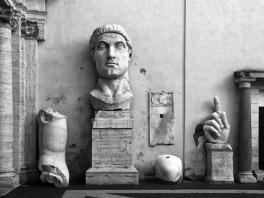
This course examines the history of Western Art (architecture, painting and sculpture) from the third millennium BCE through the fifteenth century CE. Rather than a complete “survey” of that period, the course will concentrate its attention on a select group of representative monuments. We will examine not only the monuments themselves, but also the historical context in which they were produced in order to explore their purpose and the way that they functioned. There will be a strong emphasis on visual analysis and understanding how visual forms convey meaning and relate to the viewer. Our goal is to impart not only a body of knowledge but also a set of critical tools, which you should be able to apply to even material not specifically covered in this course.
GE foundation lit, visual and performing arts and historical and cultural studies course
History of Art 2001 Night - History of Western Art I: Ancient and Medieval Worlds
Class #35282 | IN PERSON | TUE & THUR 5:30-6:55PM
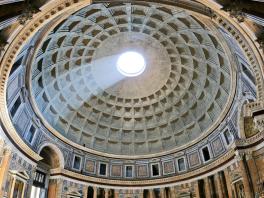
This course examines the history of Western Art (architecture, painting and sculpture) from the third millennium BCE through the fifteenth century CE. Rather than a complete “survey” of that period, the course will concentrate its attention on a select group of representative monuments. We will examine not only the monuments themselves, but also the historical context in which they were produced in order to explore their purpose and the way that they functioned. There will be a strong emphasis on visual analysis and understanding how visual forms convey meaning and relate to the viewer. Our goal is to impart not only a body of knowledge but also a set of critical tools, which you should be able to apply to even material not specifically covered in this course.
GE foundation lit, visual and performing arts and historical and cultural studies course
History of Art 2001H Honors - History of Western Art I: Ancient and Medieval Worlds
Professor Ravinder Binning
Class #30085 | IN PERSON | MON & WED 9:35-10:55AM
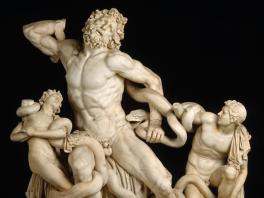
This course examines the history of Western Art (architecture, painting and sculpture) from the third millennium BCE through the fifteenth century CE. Rather than a complete “survey” of that period, the course will concentrate its attention on a select group of representative monuments. We will examine not only the monuments themselves, but also the historical context in which they were produced in order to explore their purpose and the way that they functioned. There will be a strong emphasis on visual analysis and understanding how visual forms convey meaning and relate to the viewer. Our goal is to impart not only a body of knowledge but also a set of critical tools, which you should be able to apply to even material not specifically covered in this course.
GE foundation lit, visual and performing arts and historical and cultural studies course
History of Art 2002 - History of Western Art II: Europe and the United States, Renaissance to Modern
Professor Andrew Shelton
Class #20613 (+ Recitation) | IN PERSON
Lecture: MON & WED 10:20-11:15AM | Recitation: Varied
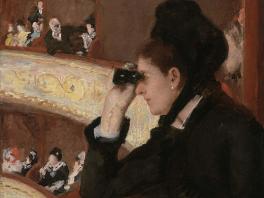
This course examines the art of Europe and the United States from about 1400 to the present, with an emphasis on developments in painting. Rather than a traditional survey of that period, the course will concentrate on a select group of representative works that shaped—and were shaped by — Western social, political, economic, and intellectual history. There will be a strong emphasis, too, on questions of analysis and interpretation — including, in some cases, the changing history of the artworks’ reception. The goal will be to impart not only a body of knowledge but also a set of critical tools, including visual literacy, that students will be able to apply to a wide range of material not specifically covered in the course.
GE foundation lit, visual and performing arts and historical and cultural studies course
History of Art 2002 Online - History of Western Art II: Europe and the United States, Renaissance to Modern
Class #24398 | ONLINE | Fully Asynchronous
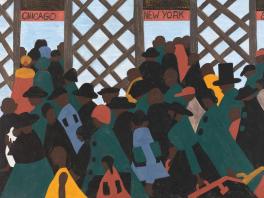
This course examines the art of Europe and the United States from about 1400 to the present, with an emphasis on developments in painting. Rather than a traditional survey of that period, the course will concentrate on a select group of representative works that shaped—and were shaped by — Western social, political, economic, and intellectual history. There will be a strong emphasis, too, on questions of analysis and interpretation — including, in some cases, the changing history of the artworks’ reception. The goal will be to impart not only a body of knowledge but also a set of critical tools, including visual literacy, that students will be able to apply to a wide range of material not specifically covered in the course.
GE foundation lit, visual and performing arts and historical and cultural studies course
History of Art 2002 Night - History of Western Art II: Europe and the United States, Renaissance to Modern
Class #35283 | IN PERSON | TUE & THUR 5:30-6:55PM
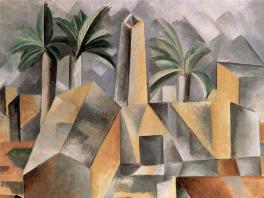
This course examines the art of Europe and the United States from about 1400 to the present, with an emphasis on developments in painting. Rather than a traditional survey of that period, the course will concentrate on a select group of representative works that shaped—and were shaped by — Western social, political, economic, and intellectual history. There will be a strong emphasis, too, on questions of analysis and interpretation — including, in some cases, the changing history of the artworks’ reception. The goal will be to impart not only a body of knowledge but also a set of critical tools, including visual literacy, that students will be able to apply to a wide range of material not specifically covered in the course.
GE foundation lit, visual and performing arts and historical and cultural studies course
History of Art 2003 - The Art and Visual Culture of East Asia
Professor Christina Mathison
Class #20617 (+ Recitation) | IN PERSON
Lecture: MON & WED 11:30AM-12:25PM | Recitation: THUR or FRI 11:30AM-12:25PM
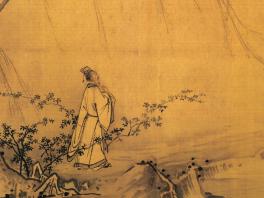
This course offers an introduction to the visual arts in East Asia, from the Neolithic through today. The course examines in particular the relationship between cultural production and changing notions of authority in East Asia in a comparative historical perspective. Case studies will be drawn from China, Korea, Japan, and neighboring regions. Issues examined include: religion and early state formation; courtly culture and monumentality; the development of urban popular culture; the age of empire; art and modernization.
GE foundation lit, visual and performing arts and historical and cultural studies course
AFAMAST/History of Art 2101 - Introduction to African Art and Archaeology
Professor Sarah Van Beurden
Class #37519 | IN PERSON | WED & FRI 3:55–5:15PM
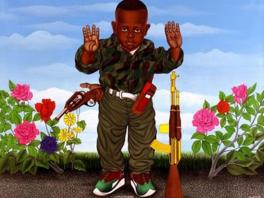
Is there a difference between African and Western ideas about art? Is there such a thing as ‘African’ art, or is that too general? What role does art play in today’s cultures of Africa? How useful are the categories of ‘traditional’ and ‘modern’ when discussing African cultures? How did so much African art end up in western museums and private collections? Why do we see so many artistic traditions around the world that were influenced by African art?
In this course we will explore a variety of African art forms and learn about the cultures that produce them. The course provides a historical survey as well as a thematic overview of the artistic cultures of the African continent. Emphasizing cultural diversity and complexity, we will explore the arts of a wide range of African peoples, from precolonial civilizations until contemporary times. In addition, a number of artistic traditions of the African Diaspora are explored in light of their connections to the African continent. We will also examine the collection and study of African art by the west, as well as the history of its display in western museums, and the current debate around the issue of the restitution of these collections.
History of Art 2301: Classical Archaeology
Professor Mark Fullerton
Class #29763| ONLINE | ASYNCHRONOUS
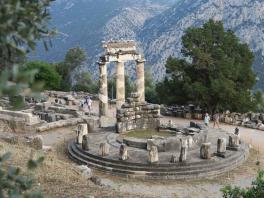
This course is concerned with the study of the Classical past through its material remains, especially, works of art – architecture, sculpture and painting. Indeed, the study of ancient Greek and Roman art has for centuries been embedded within the field of Classical Archaeology, for reasons that we will closely consider.
The term “Classical” here refers to the Greek and Roman cultures of the Mediterranean world beginning with the palace civilizations of the Aegean Bronze Age and extending through the third century of the Roman Empire (c.2000 BCE-3000 CE). The objective of the course is to familiarize the student with works of art from ancient Greece and Rome, as well as the major archaeological discoveries and controversies of the past two centuries. The selection of sites and monuments is not comprehensive but is intended to showcase important developments within the field, especially in cases where archaeology has provided evidence that challenges preconceived notions of Greek and Roman culture.
This fully online course will be delivered entirely through Ohio State University’s learning management system, Carmen/Canvas.
History of Art 2901 Online: Intro to World Cinema
Class #28920 | ONLINE | ASYNCHRONOUS
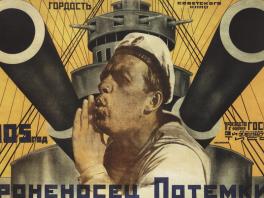
This course will introduce students to the history of film as an artistic medium and a global art form. We will track technological, aesthetic, and formal developments in its evolution from photographic and proto-cinematic technologies to digital cinema (roughly 1827-2001) by studying particular masterpieces, and focusing on the role of the director or auteur. We will pay close attention to the medium’s complex relationship to time, its changing materiality (and “medium specificity”), and its fraught relationship to truth and reality. Students will engage in a historical and formal study of international cinema through a chronological survey of its major forms, techniques, and its relationship to the broader history of art, as well as social and political history. We will sample its major and “minor” forms, from Hollywood productions to art gallery experiments and cinema from the developing world. Students will be introduced to the grammar of film through a historical account of its formal evolution and the stylistic analysis of the visual and narrative structures of individual films.
GE VPA and diversity global studies course
GE foundation lit, vis and performing arts course
History of Art 3521 - Renaissance Art
Dr. Kristen Adams
Class #29522 | IN PERSON | MON & WED 5:30-6:55PM
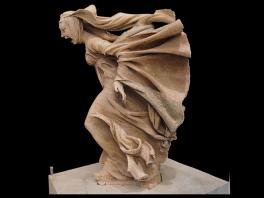
This course offers a panoramic introduction to the greatest artists and masterpieces of the Italian Renaissance from its beginnings in Florence through its triumph in Rome and Venice. After setting the stage with a brief overview of the art of the Late Gothic period in Italy, lectures will trace the revolutionary changes that transformed painting, sculpture, and the decorative arts in the 15th and 16th centuries. Special consideration will be given to the intersection of art and technology. Students will experience the Sistine Chapel in Virtual Reality and will examine how other modern technologies, when applied to Renaissance craft, bring new insight to this remarkable period in art history.
GE VPA and diversity global studies course
GE foundation lit, vis and performing arts course
History of Art 3603 - Introduction to Modern Latin American Art and Culture
Professor Carlos Rivas
Class #35280 | IN PERSON | TUE & THUR 9:35-10:55AM
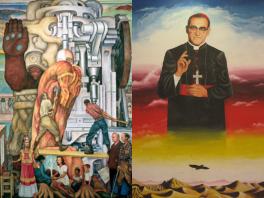
This course will survey the arts and architecture of Latin America. We will pay special attention to the development of specific artistic movements and methods, major artists, political graphics, and social movements. We will end with an overview of the emergence of Latinx diasporic art in the United States.
GE VPA and diversity global studies course
GE foundation lit, vis and performing arts course
History of Art 3605 - East - West Photography
Professor Namiko Kunimoto
Class #35276 (+ Recitation) | IN PERSON
Lecture: TUE & THUR 11:30AM-12:25AM | Recitation: Varied

This course will begin with the emergence of photography and will examine the medium’s pivotal role in shaping relations between Asia and Europe and North America. We will explore early portraiture, architectural sites, colonial tourism, popular culture, family photographs, and contemporary art photography. No previous experience in Asian art or photography required.
New GE Course in Race/Ethnic/Gender Diversity Category (REGD)
New GE Course in Literary, Visual, and Performing Arts (LVPA)
GE VPA course
GE foundation lit, vis and performing arts and race, ethnicity and gender div course
History of Art 3901 Night - World Cinema Today
Mark Svede
Class #29135 | IN PERSON | TUE & THUR 5:30-6:55PM
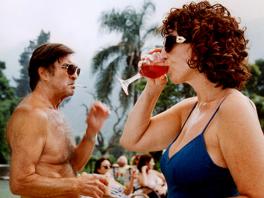
This course will survey the best of world cinema within the past decade or two, including representative examples of national cinemas, such as (potentially, since the selections would change) Iranian, Chinese, Taiwanese, and Indian; ethnic cinemas, such as (potentially) Kurdish, Jewish diaspora, and Quebecois; regional cinemas, such as (potentially) Eastern European and Middle Eastern cinemas; continental cinemas, such as African and South American; global cinema, such as Euro-American, Hong Kong, and Dogme 95; and the cinemas of civilizations, such as Islamic, Judeo-Christian, and Confucian. Not all these categories, or others that are possible, are represented in any given quarter.
GE VPA and diversity global studies course
GE foundation lit, vis and performing arts course
History of Art 3901 Online - World Cinema Today
Professor Erica Levin
Class #35284 | ONLINE | ASYNCHRONOUS

Despite its common usage “world cinema” lacks a proper, positive definition. It tends to be defined negatively as “non-Hollywood cinema,” which Lúcia Nagib observes, “unwittingly sanctions the American way of looking at the world, according to which Hollywood is the center and all other cinemas are the periphery.” This course provides an introduction to world cinema that attends carefully to questions of definition. The emergence of global art cinema is often mapped as a succession of “new waves”: Italian neorealism, the French nouvelle vague, the Danish Dogma movement and New Iranian Cinema. We will look at how the aesthetics of realism, concerned above all with the texture and temporality of everyday life, set these film movements (and other parallel developments in African, Latin American, Asian cinema) apart from films shaped by the codes of genre and commercialism. We will consider how recent world cinema departs from realism to depict experiences characterized by transnationalism, post-colonialism, and migration. Placing these films into the broader historical and (multi-) cultural contexts of their production, we will examine how world cinema today not only engages life in the present, but also calls up occluded fragments of the past.
GE VPA and diversity global studies course
GE foundation lit, vis and performing arts course
History of Art 4001 - Writing Seminar: It's Not Fair
Professor Sampada Aranke
Class #28919 | IN PERSON | TUE & THUR 11:10AM-12:30PM

This class explores how allegories of fairness structure histories of art. These mythologies impact visions of justice, material routes of trade, questions of authorship, and the ethics of artistic capital. We will take the “fair” as a central point of departure for this class. World’s Fairs, gendered epidermal fairness, fair trade, and transactional artistic fares, all of these histories take the realm of the visual as vehicles to just representations. How do we reconcile fairness as it forms and informs works of art and the figure of the artist? What visions of justice prevent us from actualizing ethical relationships? How are exploitation and alienation central to artistic production? We will explore artistic genres across temporalities such as the 17th Century Dutch Art Market versus the shadow archive of Dutch colonial trade routes; World’s Fair exhibits and postcolonial performance responses; Victorian photographs and gendered affiliations; and finally, the figure of the intern and (artistic) collective responses to free labor.
History of Art 4016 - Senior Research Seminar: Manet / Degas
Professor Andrew Shelton
Class #28941 | IN PERSON | TUE & THUR 2:20-3:40PM

In this course, we will explore in detail the careers of two of the most important pioneers of modern art: Edouard Manet (1832-1883) and Edgar Degas (1834-1917). In addition to examining the works of these two artists as well as their sometimes tumultuous relationship with one another, we will explore the considerable body of scholarship that their work has elicited over the last half century by such leading art historians and T.J. Clark, Michael Fried, Griselda Pollock, Eunice Lipton, Carol Armstrong, Hollis Clayson, and Darcy Grimaldo Grigsby. This course is being taught in conjunction with a major exhibition devoted to Manet and Degas that will be on view at the Metropolitan Museum of Art in New York City from September 24, 2023, until January 7, 2024.
Members of the course will travel as a group to New York to view the exhibition and other related collections during Fall Break (October 12-15).
This optional (but highly encouraged) part of the class will be fully funded for all enrolled students. Students will be able to visit relevant museums and collections with the course instructor, conduct their own research, and meet with History of Art alumni working in the arts in the city.
History of Art 4020 - Special Topics in Architecture: South Asian Architecture from Temples to Skyscrapers
Professor Ujaan Ghosh
Class #35285 | IN PERSON | WED & FRI 9:35-10:55AM
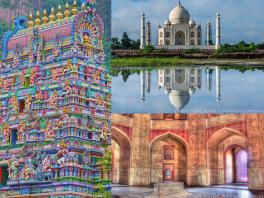
This course explores the history of South Asia through an examination of its buildings. The subcontinent is home to one-eighth of the world's population and boasts over twenty languages and over a thousand ethnic groups, making it one of the most diverse topographies in the world. We will not only learn about the architectural styles and biographies of specific buildings as stand-alone case studies, but also the various historical circumstances, networks of patronage, and intellectual interactions that enabled them. Special attention will be given to the ways in which monuments in South Asia expressed political, religious, and cultural facets of power. We will start our exploration with the earliest surviving ruins of the Indus Valley and move on to the banquet of Buddhist stupas, Jain and Hindu temples, and their important regional variations. In the second half of the course, we will delve into the building traditions of the majestic Mughals, gradually moving on to colonial and post-colonial era buildings. The course will conclude with a discussion of the ways in which monuments have emerged as one of the central axioms of political assertion in contemporary South Asia. No prior background in South Asian or Asian history or art history is required.
History of Art 5001 - Mary: A Global Icon
Professor Ravinder Binning
Class # UG - 30613 | G - 30614
IN PERSON | TUE & THUR 9:35-10:55AM
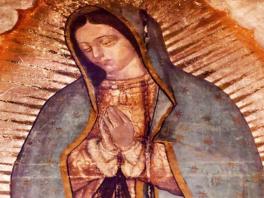
From Peru to Ethiopia, Constantinople to Mexico to Italy, we find her image: pictures of Mary occupy a fascinating and mysterious role in the history of art. Her image has been associated with miracles, with times of war and peace. She has been the subject of visions but also intense controversy. This course traces her image around the globe and across the centuries. We will trace her portrayal from the dawn of Christian art in places like Egypt and Rome all the way into the present moment across media and public spaces in contemporary cities. By focusing on her figure in a range of settings, we will also see how the desires for her representation call into question the art historical categories of “elite” versus “popular” media; the course presents students with exposure to contemporary topics in the methods of study of religious art as well.
History of Art 5002 - The Art of Colonial Taiwan
Professor Christina Wei-Szu Burke Mathison
Class # UG - 36393 | G - 36395
IN PERSON | TUE & THUR 11:10AM-12:30PM

This course explores the art and history of colonial Taiwan. Taiwan’s unique position in the Pacific led to a succession of colonial powers and settlers on the island that ushered in a variety of influences that altered the world of art in Taiwan. We will explore how Taiwan’s historical context and its geographic position fostered transcultural exchange between artists within East Asia. A close look at the artwork created during Japan’s occupation of Taiwan (1895-1945) uncovers the unique nature of colonialism in this region. This course investigates the various effects on the Taiwanese art world of the twentieth century and the larger issues within colonialism.
History of Art 5645 - Video Art
Professor Kris Paulsen
Class # UG - 35288 | G - 35289
IN PERSON | WED & FRI 2:20-3:40PM
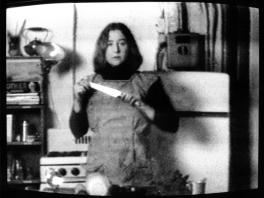
This course will survey the history of Video Art from 1965 to the present, paying special attention to the cultural and political forces that shaped its form and content. We will trace Video Art’s roots back to Pop, Minimalism and Conceptual Art, and examine its early identities as “sculpture” or “performance document.” We will pay special attention to video’s relationship to its “parent” media – television – and study how artists used television broadcasts to distribute their work and to subvert the power of the mass media. The course will end with a series of case studies on contemporary artists and special events at the Wexner Center for the Arts. Students will learn to analyze video art by engaging with its specific formal and temporal structures, its relationship to social history and politics, as well as its “cinematic” properties, such as narrative, shot and editing.
History of Art 5910 - Documentary Cinema
Professor Erica Levin
Class # UG - 35290 | G - 35291
IN PERSON | WED & FRI 3:55PM-5:15PM

The artist Hito Steyerl observes, “The documentary form as such is now more potent than ever, even though we believe less than ever in documentary truth claims.” This course explores the paradox she identifies by looking closely at the history of documentary cinema, from the first film named to the genre – Nanook of the North – to the present day, as it shapes a wide range of moving image practices. The class follows an historical trajectory, but will encourage you to think comparatively and analytically about documentary form, ethics, and aesthetics. We will examine the major modes of documentary filmmaking including cinema verité, direct cinema, investigative documentary, ethnographic film, agit-prop, activist media, autobiography and the personal essay. Through formal analysis, we will ask how these different documentary modes generate or exploit a variety of “reality effects.” Along the way, we will consider why the promise of documentary truth is always beset by uncertainty, or as Steyerl describes it, “a shadow” of insecurity. Rather than accept this phenomenon as a constraint or a limit, we will explore how experimental filmmakers and artists like Steyerl help us to see the value and meaning of the “perpetual doubt” documentary inspires.
History of Art 7015 - Exhibition Histories
Professor Sampada Aranke
Class #35278 | IN PERSON | THUR 2:15-5:00PM
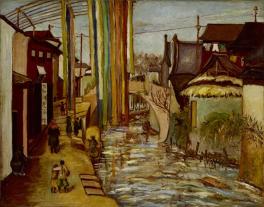
This seminar tracks the history of art exhibitions from the 19th century to the present day, with the aim of exploring both the coherence and instability of this paradigmatic—yet frequently contested—cultural form. Questions of art’s publicness will be key to our inquiry: How was it that art exhibitions came to play such an important role in the public life of bourgeois society? What might be learned about that society’s changing shape (and its shifting zones of social exclusion) through the study of its foremost public manifestations? How have artists, critics, curators, and other social agents sought to challenge and rework the terms by which audiences and works of art encounter each other publicly? And how has the transformation—and globalization—of the exhibition system in recent decades changed the stakes of art’s publicness?
History of Art 8001 - Queer Art Histories
Professor Karl Whittington
Class #35279 | IN PERSON | WED 2:15-5:00PM
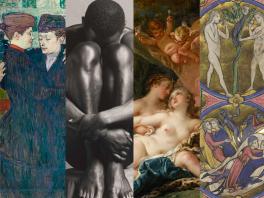
In case studies ranging from ancient Greece to the contemporary world, this course will explore the intersection of queer desire, identity, and representation in art history. After an introduction to the history and theory of queer studies, and the historiography of “queer art history,” we will turn our attention towards issues such as the changing historical conceptions of same-gender desire; portraiture and gender performance; queer spaces and architecture; censorship, sexuality, and politics; the history of queer collectors, collections, and archives; issues of queer spectatorship; and how shifting understandings of nonbinary and transgender bodies have impacted the production and reception of works of art. The class will be intersectional, exploring issues related to race and ethnicity in addition to gender, sexuality, and class. The readings and case studies will primarily be focused on European Art, but students will be welcome to apply ideas from the class to works of art from across the globe in class discussions and in their own research projects.
History of Art 8601 - Studies in Modern Art
Professor Lisa Florman
Class #35277 | IN PERSON | TUE 2:15-5:00PM
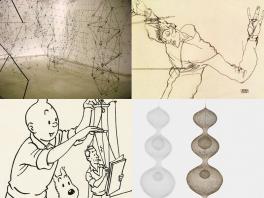
This seminar will focus on line—its history, variety, impact and affect. While the emphasis will be on its art historical manifestations, we will also consider line's appearance in culture more broadly, attending to its theoretical and narrative implications. Through a series of case studies that will range from Leonardo da Vinci to Julie Mehretu and beyond, we will take up a range of topics, including the relationship of line to color, its role in writing and calligraphy, the temporality of line, and its autographic connotations. Students from any discipline or field are encouraged to enroll.
